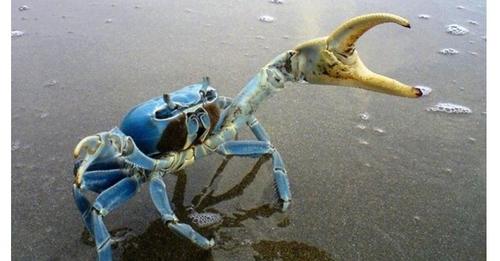The presence of blue crabs decreases in Cancun; human activity contaminates their nesting area.
CANCUN, QUINTANA ROO.- Activists say that human activity in the continental area of Isla Mujeres is destroying the blue crab’s natural habitat.
The blue crab is almost completely absent from the protected natural areas (ANPs) in Cancun, due to factors such as poaching, pollution by waste, and leachate in its nesting area.
Jesús Cahum Mex, moral leader of the Chacmochuch Community Guardian Group, pointed out that no new specimens of blue crab have been found in the Manatí lagoon this month, even though the rains are the ideal condition for this species to reproduce and nest
The disappearance of this crustacean is mainly caused by poaching. People who live in the continental area of Isla Mujeres are the ones who destroy the blue crabs. For each trip, a person can take more than 300 specimens of the animal.
Cahum Mex stated that due to the rainy season, poachers have taken advantage of every day to travel to Rio Manatí. Therefore, it is estimated that they have released more specimens every day in this last week of rain. The lack of surveillance at the accesses makes blue crab fishing easier.
According to the Mexican Institute for Research in Sustainable Fisheries and Aquaculture (Imipas), the blue crab reproduces during the rains from July to August. But it takes two years for the creature to reach its adult stage.

Given the lack of this species, federal authorities, the Institute of Biodiversity and Protected Natural Areas (Ibanqroo), and citizen environmental surveillance and education committees urged people to work on preservation. Also not capture, eat, or sell this animal.
“The blue crabs are scavengers, they eat the carcasses of animals near where they live, carrying out a fundamental role in nature. This prevents organic pollution in the lagoon area and is part of the balance of the ecosystem.
It should be noted that this species is in danger because it is caught to eat it and to sell it by the dozens on social networks.
A single healthy colony of blue crabs can consist of at least two thousand specimens.
Finally, according to information from Ibanqroo, at the end of the rainy season in August 2023, around 150 blue crab specimens were found in the nesting area in Laguna Manatí.
San Miguel Times
Newsroom

